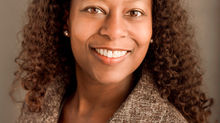Music Therapy and Neurodiversity
- Ava Marvin, LPMT, MT-BC, CYT 200

- Apr 24, 2020
- 4 min read
April is Autism Awaeness month, and out of the growing autism awareness movement comes an even more important one - autism acceptance. Autism acceptance is about truly understanding and embracing neurodiversity. Finding the beauty in Neurodiversity is one of our passions at Dynamic Lynks. At the core of our holistic approach, we believe the most important thing is to accept our clients for exactly who they are, while fully embracing the beauty of their unique neurodiversity.
What is Neurodiversity?

Like other forms of diversity (racial, cultural, gender, etc.), neurodiversity is complex. In this post we will do our best to provide some foundational information to start understanding neurodiversity!
Neurodiversity is the notion that all of our brains are different! Some brains are more different than others, and in our society/culture we have labeled and, consequently, oppressed some types of brains. This has happened through many complex sociological constructs including negative stereotypes in the media and expecting all brains to fit in the same mold.
Even though everyone's brains are different, this is what separates being neurodivergent from being neurotypical. Embracing neurodiversity is about recognizing that the qualities of a person who is neurodivergent are not "bad" or "wrong", just different from how your brain works!
Neurodiversity Facts
The term “neurodiversity” was first coined by sociologist, Judy Singer in the 1990s.
In the past 20 years, neurodiversity has primarily been discussed in the context of Autism, but is now expanding to other diagnoses.
“Neurodiversity is the idea that neurological differences like autism and ADHD are the result of normal, natural variation in the human genome” (Robison, 2013)
Neurodiverse Diagnoses
Here are some examples (though this is not all-inclusive!)
Mental Health Conditions:
Depression, Anxiety, Schizophrenia
Developmental/Intellectual Disabilities:
Autism, Down Syndrome, Cerebral Palsy
Learning Disabilities:
Dyslexia, Dyscalculia, Dysgraphia, ADHD
One important note is that people are not always born with a neurodivergent condition or disability. Our brains are always changing and a diagonis can develop later in life. For example, conditions that affect the brain like Dementia, Alzheimers, Schizophrenia, PTSD, and Anxiety may develop later in life.
The Cross-Section of Neurodiversity
Neurodiversity is all about accepting others for who they are, but often therapy is about change - how do these two work together?

At Dynamic Lynks we like to live in the middle of these 2 concepts, and we call it the cross-section of Neurodiversity!
Our first priority is always to respect the personhood of the individual who walks through our doors. We fully embrace what makes them unique and look at their strengths.
We then evaluate the validity and necessity of therapeutic intervention, and determine what treatment strategies will best support the individual in a strengths-based approach.
Through comprehensive assessment, we evaluate their areas of need and use their strengths to target those skill areas. Our goal is to provide our clients with the most fulfilling life, on terms that allow them to fully express who they are and what makes them #ausome. By working within a clinical framework that is conscious of neurodiversity, therapists can carefully select goals and techniques that respect someone's personhood while addressing treatment needs.
For example, many individuals with autism "stim" as a way to self-regulate. If we look at this behavior from the cross-section perspective, we need to find out WHY the person is stimming because it can be a necessary part of their personhood! If they are hand flapping because of joy and excitement, this is NOT a behavior that needs to be "fixed" or "corrected." However, some stims can be dangerous to the person or others, such as head banging on a hard floor. In this instance, treatment and intervention of the stim is necessary and valid to keep the individual safe. We may help the person replace that behavior with a self-stimulatory behavior that does not cause them harm.
"Therapy can be very helpful when something is getting in the way of a person's safety or their personal goals in life." (AMA J Ethics, 2015)
Music Therapy and Neurodiversity

Music therapists are uniquely qualified to work with people with neurodivergent needs!
We are able to embrace individuals as they are because we can use music to “just be” with a client.
We use the arts to communicate and provide a safe space to explore their strengths and needs.
Through music making, we have opportunities to engage an individual in fun and embrace all that they are.
We have a way to connect beyond social constructs, judgements, or rules.
We get to know the client through a medium that already makes them happy, allowing us to see who they are, holistically.
Thinking from a place of joy and a strength-based mindset, we are uniquely qualified to work with neurodiverse individuals and help them thrive!
Want to Learn More?
Team Dynamic Lynks has spent hours researching, learning, and presenting on this topic. We also practice these principles every single day, in and out of the clinic. If you are interested in learning more about neurodiversity and music therapy, or in having us give an interactive presentation at your facility, reach out to us at info@dynamiclynks.com!
References
AMA J Ethics.2015;17(4):297-298. doi: 10.1001/journalofethics.2015.17.4.fred1-1504. Retrieved from https://journalofethics.ama-assn.org/article/autism-paradox/2015-04
Kapp, S., Gillespie-Lynch, K., Sherman, L., Hutman, T. (2012). Deficit, Difference, or Both? Autism and Neurodiversity. Developmental psychology. 49. 10.1037/a0028353.
Robison, J. E., (2013). What is Neurodiversity?: Neurodiversity means many things to people. Here's my first person definition. Psychology Today. Retrieved from














































Comments